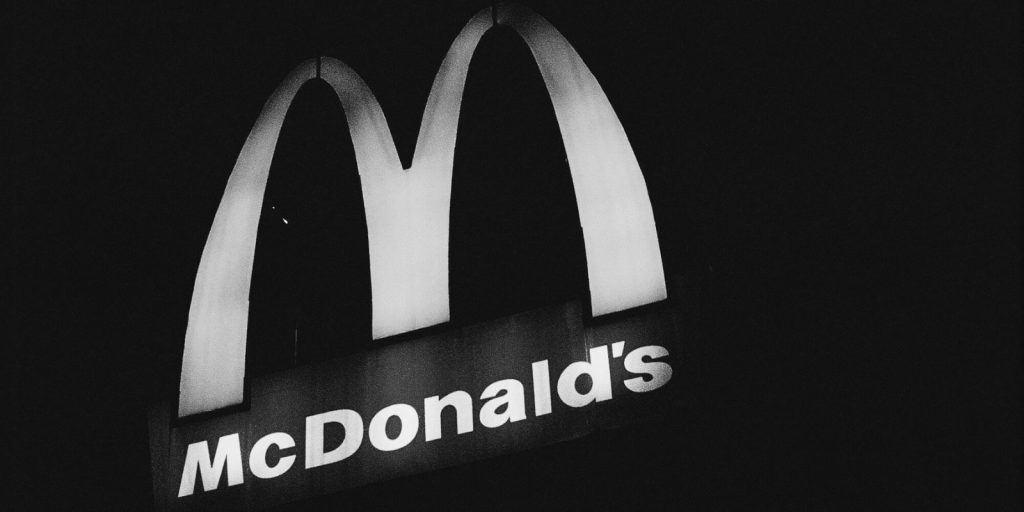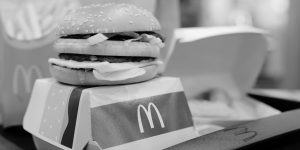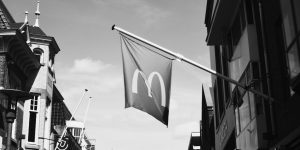
What Happened On May 15th?
On May 15, 1940, Richard and Maurice McDonald opened the doors of their first restaurant, McDonald’s Bar-B-Q, in San Bernardino, California. The brothers introduced a simple menu featuring 25 items. This small drive-in restaurant would lay the foundation for what would become a global fast food empire.
Who Were The McDonalds?
Later in 1948, Richard and Maurice McDonald revolutionized their drive-in restaurant in San Bernardino, California, by introducing the “Speedee Service System.” This system emphasized quick service and high efficiency. From the get-go, their innovative kitchen design allowed for a rapid assembly of food, drastically reducing wait times and costs.
This system caught the attention of Ray Kroc, who saw potential in their operation.
Kroc, born in 1902 in Oak Park, Illinois, was a “multimixer milkshake machine” salesman. After meeting the McDonald brothers, he proposed the idea of franchising the business nationwide.
The brothers were initially hesitant, but Kroc’s persistence paid off, and he eventually bought the exclusive rights to the McDonald’s name and system. On April 15, 1955, Kroc opened the first franchised McDonald’s restaurant in Des Plaines, Illinois.

Kroc’s vision was clear: to transform the small burger joint into a nationwide chain, offering consistent quality and rapid service. That day, McDonald’s began the journey to becoming an iconic symbol of American culture and fast food.
It Wasn’t Just Ray Kroc
The success of McDonald’s was not solely due to Ray Kroc and the McDonald brothers. A dedicated team of individuals helped to transform the small hamburger stand into a global empire.
Fred Turner, who started as a grill man at the Des Plaines restaurant, later became the CEO and was instrumental in expanding the company’s reach and standardizing its operations.
More so, Harry Sonneborn served as McDonald’s first ever president and CEO. Sonneborn’s financial acumen led to the development of the unique real estate model that underpins McDonald’s success. By owning the land and buildings where franchises operated, McDonald’s ensured a steady revenue stream and greater control over its brand.
Surprising McDonald’s Facts
The famous Golden Arches were actually not part of the original McDonald’s design. They were introduced by architect Stanley Clark Meston in 1953 when the McDonald brothers wanted a new design for their San Bernardino restaurant. The arches were initially a structural element but quickly became the symbol of the brand, recognized worldwide.

While McDonald’s is known for its burgers, it has introduced several innovative menu items over the years. The Big Mac, one of the most famous, was created by franchisee Jim Delligatti in 1967. The Egg McMuffin, which revolutionized breakfast, was introduced by franchisee Herb Peterson in 1972. These innovations helped McDonald’s attract a broader customer base and adapt to changing consumer preferences.
To ensure consistency and quality across its franchises, McDonald’s established Hamburger University in 1961. Located in Elk Grove Village, Illinois, this institution trains franchisees and managers in the art of running a McDonald’s restaurant. The curriculum includes courses on operations, leadership, and customer service, ensuring that every McDonald’s around the world maintains the same high standards.
One of the most fascinating aspects of McDonald’s business model is its real estate strategy. Ray Kroc, with the help of Harry Sonneborn, devised a plan where McDonald’s would lease or buy the land on which its restaurants were built. Franchisees would then pay rent to McDonald’s, providing the company with a stable income and control over the franchise operations.
The Market Domination
The immense popularity of McDonald’s can be attributed to several factors. However, the standardization and consistency of their products stands out. From the very beginning, Ray Kroc signified the importance of delivering the same quality and taste across all locations, ensuring that customers knew exactly what to expect, whether they were in Illinois or California.
McDonald’s marketing strategies contributed to its dominance. Iconic advertising campaigns and memorable characters, such as Ronald McDonald, helped embed the brand into popular culture. Promotions, such as the introduction of the Happy Meal in 1979, targeted younger audiences and built lifelong customer loyalty.
By the numbers, McDonald’s presence is staggering. As of 2021, McDonald’s operated over 39,000 restaurants in more than 100 countries, serving approximately 69 million customers daily.

In the United States alone, McDonald’s has a market share of about 21.4% in the fast food industry, dwarfing its closest competitors. The company’s annual revenue consistently exceeds $20 billion, a testament to its vast and enduring appeal.
The company’s commitment to innovation ensures its continued relevance. From introducing healthier menu options to incorporating technology like self-service kiosks and mobile ordering, McDonald’s adapts to meet the evolving needs of its customers.
From the opening of the first McDonald’s restaurant and its rise to global dominance, it is clear that the determination of Ray Kroc, the McDonald brothers, and their dedicated team have created an enduring legacy. McDonald’s is not just a fast food restaurant; it is a symbol of innovation, efficiency, and global connectivity.

